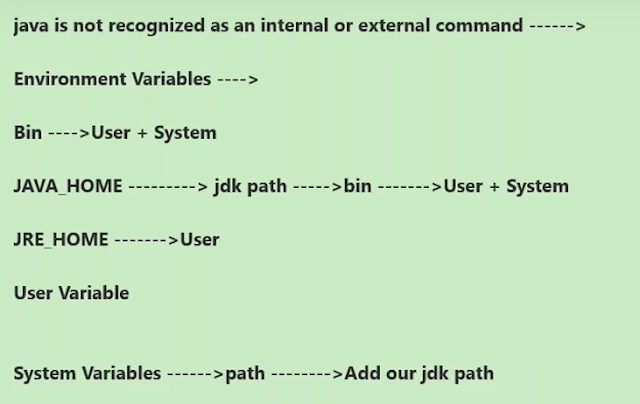There are 2 approaches :
- manual installation of IdentityIQ
Manual Installation steps are :
- If required Increase JVM : SET JAVA_OPTS=%JAVA_OPTS% -Xms4096m -Xmx6144m -XX:PermSize=256m -Dsun.lang.ClassLoader.allowArraySyntax=true
- Execute command iiq schema : It will generate custom data ddl schema file at location - app server\webapps\identityiq\WEB-INF\database.
- Connect to database to create repository for identityiq tables in database for example : mysql> source create_identityiq_tables.mysql
- Edit file – iiq.properties : to update database credential
- Through iiq console command run import init.xml and then init-lcm.xml
- Start app server
- Run identityiq using spadmin/admin
- iiq.properties file :
Analyze the Database Settings that IdentityIQ will use to connect to the database.
a.Navigate to and open the configuration file for the IdentityIQ database: /home/tomcat/webapps/identityiq/WEB-INF/classes/ iiq.properties
b. View the iiq.properties file and fill for the default values.
dataSource.username
dataSource.password Encrypted password to use when connecting to the database.
Note: generated using the iiq encryptcommand
dataSource.url Defines the host name, port and database to connect to.
dataSource.driverClassName Defines the driver to use when connecting to the database.
a.Navigate to and open the configuration file for the IdentityIQ database: /home/tomcat/webapps/identityiq/WEB-INF/classes/ iiq.properties
b. View the iiq.properties file and fill for the default values.
dataSource.username
dataSource.password Encrypted password to use when connecting to the database.
Note: generated using the iiq encrypt
dataSource.url Defines the host name, port and database to connect to.
dataSource.driverClassName Defines the driver to use when connecting to the database.
- iiq console Command :
Using the IdentityIQ Console, import the default IdentityIQ objects to initialize the system.
a. navigate to:
/home/tomcat/webapps/identityiq/WEB-INF/bin
b. Run the following command:
iiq console
for example :
At the console command prompt, load the default IdentityIQ objects using the following command:
> import init.xml
to delete any identity using iiq console command
to delete any identity using iiq console command
> delete Identity '10001';
1. the file: log4j.properties from /home/tomcat/webapps/identityiq/WEB-INF/classes
2. edit the log4j.properties file to change the logging levels used by IdentityIQ
Note: This will send all IdentityIQ logging output to the file specified in the log4j.properties file.
a. navigate to the /home/tomcat/webapps/identityiq/WEB-INF/bin directory
b. to generate the database schema files run the following command
iiq schema
Configure Extended Searchable Attributes :
Extended attribute mappings for Identity.
By default we will map 10 extended attributes, but this may be raised to
a maximum of 20. Using ExtendedPropertyAccessor can add attributes beyond
the limit of 20
Only the first five attributes are indexed, to provide
an example of how to specify an index. In a production deployment you
will usually index most of the extended attributes since they are
usually added for searching, but index maintenance slows down updates to
the identity cube so add them only if necessary.
All extended properties must be of type="string".
Adding the extended attributes to the Hibernate XML the file IdentityExtended.hbm.xml --> /identityiq/WEB-INF/classes/sailpoint/object
- Configure IdentityIQ Logging :
1. the file: log4j.properties from /home/tomcat/webapps/identityiq/WEB-INF/classes
2. edit the log4j.properties file to change the logging levels used by IdentityIQ
Note: This will send all IdentityIQ logging output to the file specified in the log4j.properties file.
- Configure the Database :
a. navigate to the /home/tomcat/webapps/identityiq/WEB-INF/bin directory
b. to generate the database schema files run the following command
iiq schema
Configure Extended Searchable Attributes :
Extended attribute mappings for Identity.
By default we will map 10 extended attributes, but this may be raised to
a maximum of 20. Using ExtendedPropertyAccessor can add attributes beyond
the limit of 20
Only the first five attributes are indexed, to provide
an example of how to specify an index. In a production deployment you
will usually index most of the extended attributes since they are
usually added for searching, but index maintenance slows down updates to
the identity cube so add them only if necessary.
All extended properties must be of type="string".
Adding the extended attributes to the Hibernate XML the file IdentityExtended.hbm.xml --> /identityiq/WEB-INF/classes/sailpoint/object
2. IIQ Installation using the SSD
1) Download the latest SSD
2) Unzip the contents and look at the /doc/Services-Standard-Build User Guide.pdf for steps to setup the configuration files and for details on the build target commands
3) The minimum required configuration files that you probably need to change are:
- server.properties
- either the default sandbox.xxx.properties, or define your own environment mapping in server.properties and create all the
.xxx.properties (target.properties, iiq.properties, ignorefiles.properties, etc.) - create a
.build.properties file and modify all the required properties based on the PDF above > Build Configuration section. This is probably the most important step and the most important configuration item, so make sure all values are correct before building the application.
4) Download the required identityiq7.x .zip file and latest patch identityiq-7.xpx.jar and place the files in the folder structure of the unzipped SSD in the /base/ga and /base/patch folders, respectively
5) From a command prompt on the root of the SSD directory, where the build.xml and all the xxx.properties are located, execute:
- build war
- build createdb
- build patchdb
6) Deploy the resulting /build/deploy/identityiq.war to your Application server. You can use the target "build deploy" or do it manually
7) From the deployed and expanded WAR file open a command prompt to /WEB-INF/bin and execute "iiq console" command.
8) Once inside the console, execute "import init.xml", and then "import init-lcm.xml". Then exit the console with exit command
9) From the command prompt, go to /WEB-INF/bin and execute "iiq patch 7.xpx"
10) Start application server and then access IdentityIQ via a browser. Login as spadmin/admin








